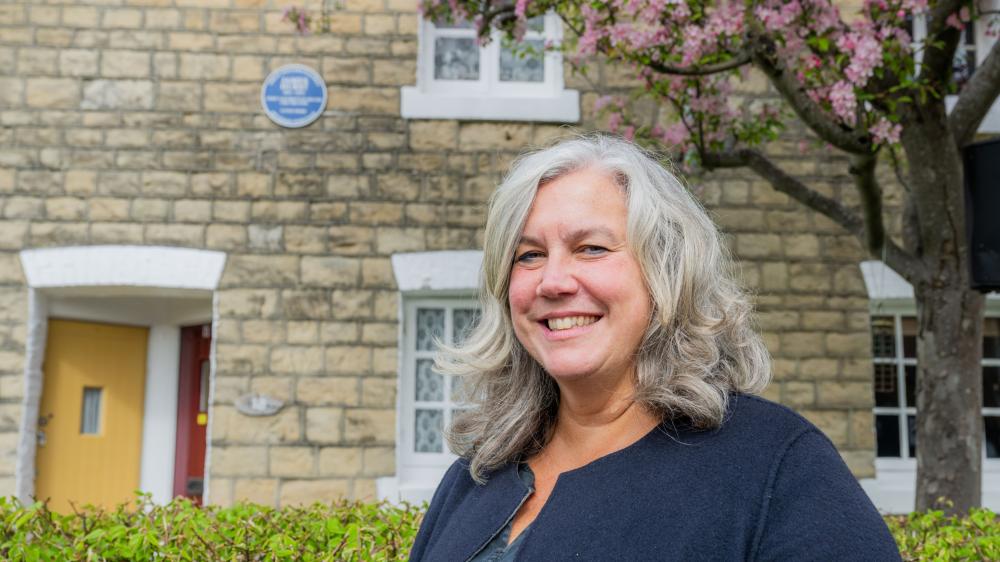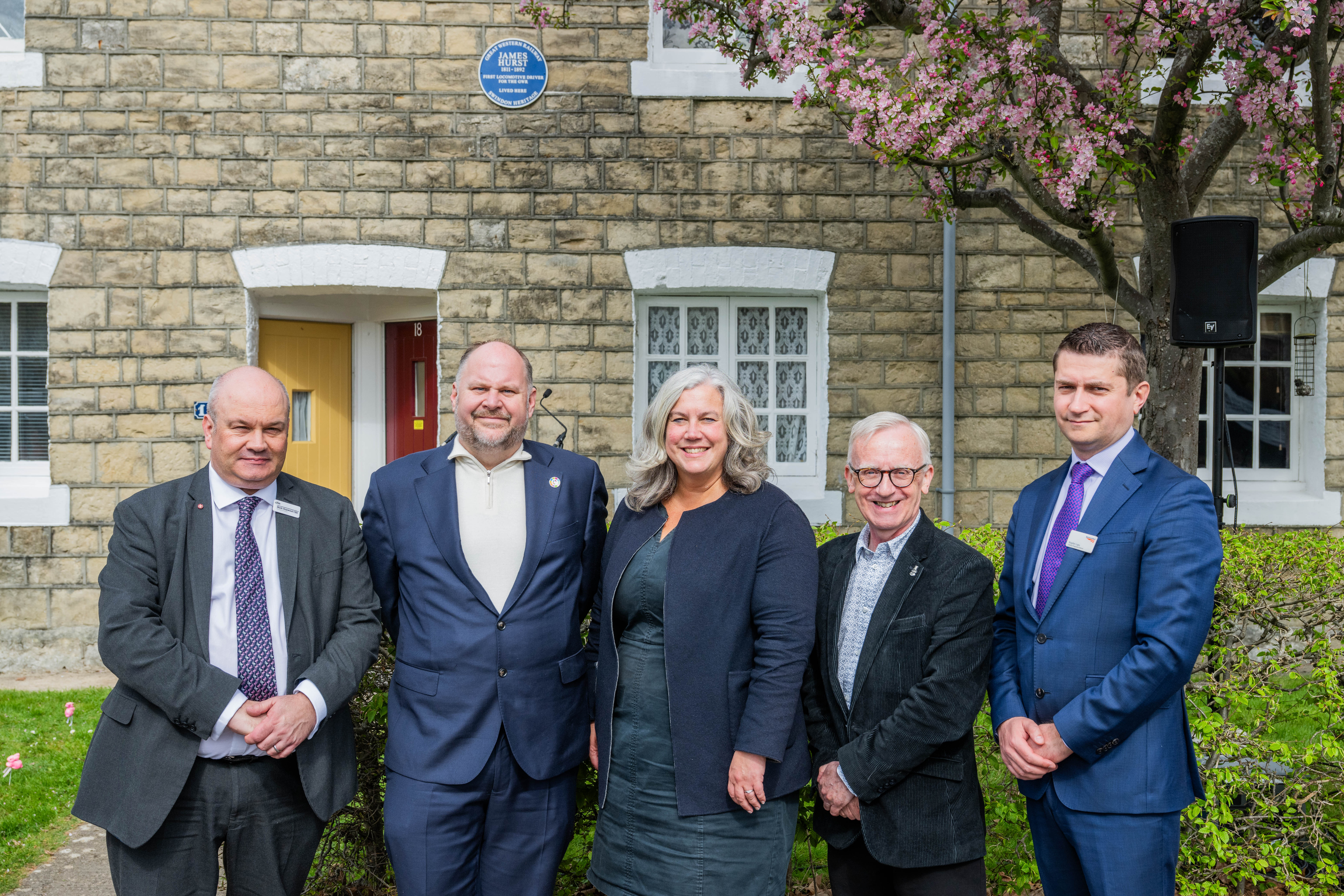A blue plaque honouring Great Western Railway’s first locomotive driver has been unveiled as part of the 200th anniversary celebrations of the birth of the railway.
James ‘Jim’ Hurst, who worked closely with railway pioneers George Stephenson, Daniel Gooch and Isambard Kingdom Brunel, was appointed as the first locomotive shunter for Great Western Railway (GWR), taking to the tracks on 28 December 1837.
His plaque was unveiled by Swindon South MP and Secretary of State for Transport, Heidi Alexander, in a ceremony hosted by GWR. The commemorative inscription sits above the front door of the last place Jim called home, in Taunton Street, Swindon, located in the heart of the historical Railway Village.
Born in Lancashire in 1811, Hurst began his life in the railway at the age of 14 when he assisted engineer and 'Father of the Railways', George Stephenson, in surveying the land that would become the Liverpool & Manchester Railway. This led to Stephenson employing him at an engine house in Salford as a fireman in 1832, followed by a promotion two years later to become an engine driver.
It was while driving locomotives to the Vulcan foundry of Charles Tayleur & Co. in Lancashire that met and became friends with a young apprentice by the name of Daniel Gooch. Gooch went on to be appointed as the first Locomotive Superintendent by the chief engineer of Great Western Railway, Isambard Kingdom Brunel, with Jim joining his good friend soon afterwards, relocating to Paddington.
Jim's 38 years of service for GWR eventually brought him to Swindon, where he lived out his days with his wife of 61 years, Ann, passing away in 1892 at the age of 81. His two sons, Edward and Jim Jr, followed in their father’s footsteps, both working for GWR at Swindon works and going on to have lifelong careers in the railway. Five generations of the Hurst family ultimately worked for GWR, totalling more than a 1,000 years’ service between them.
With many landmarks across the GWR network and further afield paying homage to Brunel, Gooch and Stephenson, this plaque represents someone who is less of a household name than his comrades, but whose role in the Industrial Revolution was just as noteworthy.
Swindon South MP and Secretary of State for Transport, Heidi Alexander, said:
“I’m thrilled to unveil James Hurst’s blue plaque today, which not only honours one of the lesser-known pioneers of the railway, but also celebrates the part that Swindon and its community played in the founding of the railway 200 years ago.
“While names such as Brunel, Stephenson and Gooch are synonymous with the history of the railway, there are many other individuals whose contributions over the past two centuries have played a significant part in making the railway what it is today. James Hurst – a northern lad who became a proud Swindonian – was just one of them.”
GWR Managing Director, Mark Hopwood, said:
“It feels fitting to celebrate 200 years of the railway by honouring someone who was there at the very beginning. James Hurst dedicated his life to the railway, and I’m pleased to see that while the railway has seen significant change over the last two decades, the commitment and passion of my colleagues today is just as strong as those who were there in 1837.
“All journeys have a first step, and his first ones as a locomotive driver paved the way for thousands of colleagues, spanning three centuries, to make GWR one of the frontrunners of the modern rail industry.
"From supporting our local communities, championing sustainable travel, and inspiring people to explore some of the most beautiful parts of the UK, our colleagues, past and present, have built and maintained a railway that the next generation can be hugely proud of.”
Leader of Swindon Borough Council, Cllr Jim Robbins, said:
“Great Western Railway is at the centre of Swindon’s heritage, and I can’t think of a better way to celebrate that historical significance than with a plaque dedicated to a Swindonian who was at the forefront of the Industrial Revolution.
“James Hurst was not only committed to his work in the railway, but also to the community of Swindon. While much of Swindon has changed over the years, Jim’s home stands here, relatively untouched by time.
"I hope this tangible connection to him and his legacy will continue to inspire people to appreciate the significant part that he, his colleagues, and Swindon played in this period of British history. The plaque represents not just Jim, but all of those who came after him and who continue to keep the community of Swindon connected to the people and places they value most.”












Your Comments
Be the first to comment on this article
Login or Register to post a comment on this article